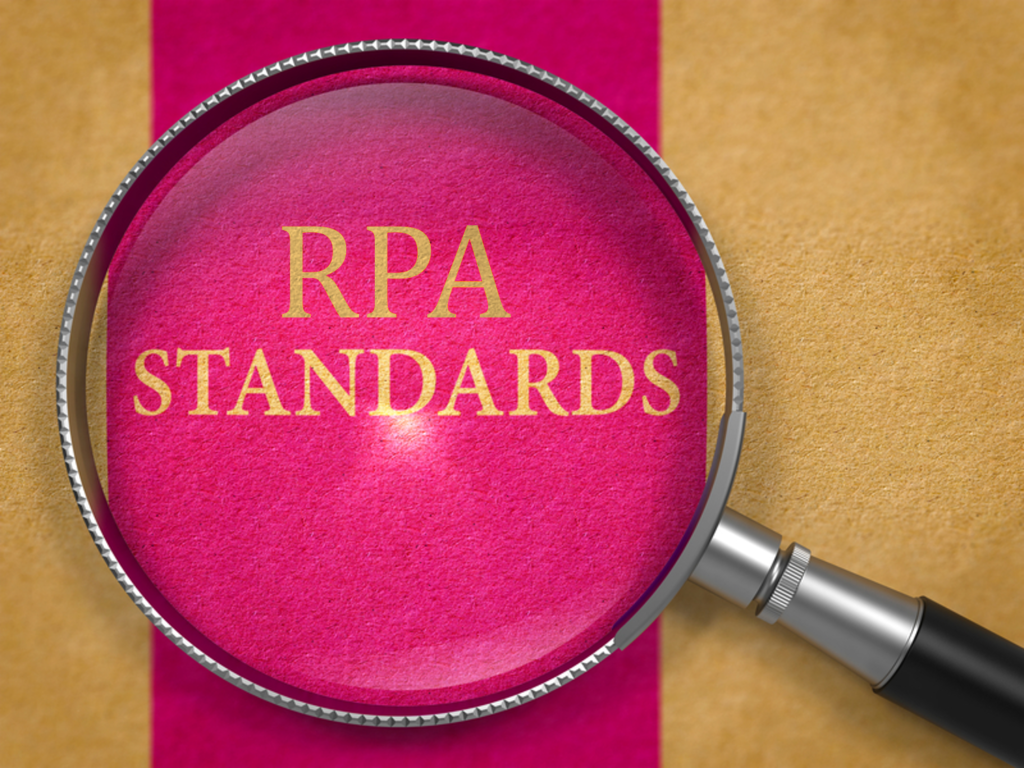Many businesses that struggled to maintain operations during the pandemic learned the importance of being a digital enterprise in the Digital Age. Aater Suleman, Vice President of Cloud Transformation at NTT DATA, explains, “Last year’s social and economic upheavals illustrated clear disparities between digital transformation progress among companies and industries. Businesses that once had multiyear digital transformation plans quickly realized they must expedite change.”[1] For many companies that depended on human workers — and needed to adapt their operations to accommodate a home-based workforce — that “expedited change” included implementing Robotic Process Automation (RPA). Alyssa Putzer, a marketing communications specialist for Metafile Information Systems, explains, “Since the pandemic struck, more companies than ever before have adopted some form of automation technology to ease the challenges of moving to remote working. Robotic process automation technology, for example, has allowed organizations to continue to run business operations securely, efficiently and strategically, regardless of where their employees are working. RPA and other forms of automation will also be key to business recovery and the gradual return to normal operations as the world slowly moves towards the post-pandemic future.”[2]
“Now, more than ever,” writes technology journalist David Roe (@druadh20), “organizations are being forced towards automation tools in order to fill in the gaps that are inevitably left with rapid digital transformation. As a result, the use of robotic process automation is expanding rapidly as organizations look for ways to speed processes that will enable workers to become more productive. It is also clear that the better these processes, the better the experience will be for companies, or individuals, doing business with your organization.”[3] Here’s the rub: There are no industry RPA standards — and that’s a problem.
The Case for RPA Standards
While many companies have had great experiences with RPA solutions, others have faced failure or frustration. Charles Sword, Chief Revenue Officer at Blueprint Software Systems, writes, “While demand for robotic process automation continues to skyrocket, it is increasingly accompanied by frustration over RPA’s failure to deliver on promised improvements in productivity and cost savings.”[4] Sword notes there are several reasons for these frustrations and failures; however, he believes lack of standards tops the list. He explains, “As might be expected, there’s plenty of blame to go around for this situation, with industry insiders pointing to everything from a lack of proper RPA governance to organizations selecting the wrong processes to automate. Casting perhaps the largest shadow, however, is the absence of an industry-wide RPA framework that provides a standard way for describing what each process to be automated does in a way that all automation tools can understand.”
Sword’s boss, Blueprint Software System’s CEO, Dan Shimmerman, explains why a lack of standards is not good for business. He writes, “As it currently stands, there is no portability and very little interoperability in the RPA ecosystem. This means a bot designed to work in one RPA platform cannot be exported to run on another platform. The ability to open, read and act on automation projects is limited to the RPA platform currently in use. And because each major RPA vendor specifies the details of process automations differently, it is nearly impossible for a user to switch RPA vendors without essentially starting the entire automation process over — essentially a non-starter for most companies because it is both expensive and time-consuming.”[5] You might think Sword and Shimmerman are simply trying to sell their software solutions; however, the case they make for universal standards is compelling.
In a separate article, Sword notes, “Consider for a moment what having a set of standards accomplished for the portable document format — or PDF. When Adobe released the PDF as an open standard a few years back, the ability to save a PDF in any word processor and open it in another tool freed up cooperation and portability that did not exist previously. These standards, in effect, advanced the paperless office and fueled digital transformations everywhere.”[6] The Internet is another example of the importance of standardization. The Internet was only an aspirational idea until two DARPA scientists — Vint Cerf and Bob Kahn, developed the Transmission Control Protocol (TCP/IP) suite. That’s why they are considered the fathers of the Internet.
The Case for Implementing RPA
The staff at BusinessMatters writes, “RPA can provide businesses with the opportunity to free staff from tedious and mundane tasks, which leaves employees with the breathing room to serve the business better. This can include spending more time helping customers or completing generally higher value work.”[7] As noted above, Putzer believes RPA is vital for many businesses and she suggests five key reasons for this:
1. Avoiding lost revenue. During the pandemic, Putzer notes, some companies lost revenue that could have been preserved had RPA solutions been in place. She writes, “In the future, organizations can also use RPA to further reconfigure and improve procedures to move forward with greater efficiency.”
2. Empowering accounts payable. According to Putzer, “Empowering accounts payable (AP) staff to work more efficiently will be critical for post-pandemic recovery. By implementing RPA, businesses can automate and streamline AP processes, which means employees will no longer need to spend time on tedious data entry or other manual processes.”
3. Saving money. “All businesses,” Putzer writes, “are looking for ways to save money as they continue the recovery process and automation is vital for doing just that. It eliminates manual data entry, which means organizations can save money on printing, scanning, faxing, filing and mailing costs.” Saving money isn’t the only advantage of RPA. Roe explains, “RPA can unlock value in older systems by providing new interfaces. At its core, RPA helps improve and optimize business process. … An adjacent benefit is the new flow will generate additional data, data provides insights and insights allow [organizations] to use AI services to improve further and add value to the business.” When AI is added to the mix, RPA becomes what I call Cognitive Process Automation™.
4. Maintaining business continuity. Putzer explains, “Throughout the pandemic, RPA has been one of the best tools for allowing businesses to remain operational while employees work safely from home. It will also play an important role in helping organizations to transition employees back to the workplace gradually by enabling office-based staff to easily collaborate with colleagues at home.” Roe adds, “RPA is a key part of digital transformation and digital transformation strategies as it offers five different advantages that organizations are looking to exploit as they build strategies to manage the sudden move to remote workplaces.” Roe’s five advantages are in the areas of 1) improving process speed; 2) empowering workers; 3) implementing dynamic processes; 4) supporting digital transformation; and 5) freeing employees from repetitive tasks.
5. Fostering resilience. According to Putzer, “RPA can also help businesses build resilience. Unfortunately, there is no crystal ball to determine when a crisis may hit. However, with tools like RPA … in place, organizations can rest assured that they are set up to successfully handle future crises.”
Not every task is right for automation and using a little common sense and a strategic approach will help you get better results from RPA implementation efforts. The staff at CIO Applications suggests, “The first step in RPA implementation is to define which processes in your company can and should be automated.”[8] Those tasks don’t include those “that involve strategic thinking, emotional intelligence, and add the most value to your client.” They recommend automating “activities that are manual, repetitive, and error-prone.” That way, humans can focus on value-added activities. The second step, the staff suggests, is to formulate an implementation plan for processes selected for automation. They note, “Pacing implementation helps you to easily monitor acceptance while giving workers the time required to adjust and appreciate how to make the most of the solution’s functions.” Once your automated process is up and running, make sure it functions as desired. The CIO Applications staff advises, “Pause to examine how it works and whether it needs to be changed.”
Although it would be nice to have standardized RPA solutions, don’t hold your breath. Since standardization isn’t on the horizon, delaying implementation of solutions that can benefit your organization is not a recommended strategy.
Footnotes
[1] Aater Suleman, “The Time For Digital Reinvention Is Now,” Forbes, 22 April 2021.
[2] Alyssa Putzer, “Why robotic process automation is vital for business success,” The Record, 27 May 2021.
[3] David Roe, “The Role of Robotic Process Automation in Digital Transformation,” CMS Wire, 15 September 2020.
[4] Charles Sword, “The RPA world desperately needs standards,” VentureBeat, 23 May 2021.
[5] Dan Shimmerman, “Why We Need Universal RPA Design Standards,” CMS Wire, 15 June 2021.
[6] Charles Sword, “Guest View: The time has come for RPA standards,” Software Development Times, 4 June 2021.
[7] Staff, “What is RPA and Why Does Your Business Need It?” BusinessMatters, 18 March 2021.
[8] Staff, “Key Steps for Deploying Robotic Process Automation,” CIO Applications, 4 February 2021.





